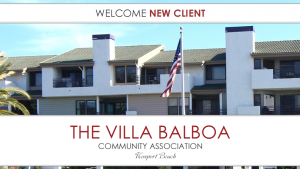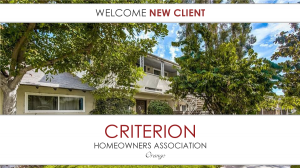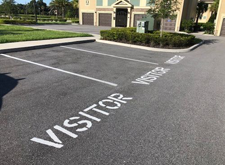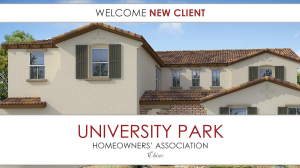 Megan’s Law is a federal law that permits authorities to release information about registered sex offenders (“Registered Offender”). California has a database of Registered Offenders available for public viewing on the internet (see www.meganslaw.ca.gov). Searches can be done by a Registered Offender’s name, or by city, zip or within a predetermined radius of a selected park, address or school. Once a Registered Offender has been located, his or her picture is displayed, as is the person’s present address, offenses, known aliases and any distinguishing scars, marks and tattoos.
Megan’s Law is a federal law that permits authorities to release information about registered sex offenders (“Registered Offender”). California has a database of Registered Offenders available for public viewing on the internet (see www.meganslaw.ca.gov). Searches can be done by a Registered Offender’s name, or by city, zip or within a predetermined radius of a selected park, address or school. Once a Registered Offender has been located, his or her picture is displayed, as is the person’s present address, offenses, known aliases and any distinguishing scars, marks and tattoos.
An HOA Board (“Board”) is not prohibited from sharing information obtained from this database with its membership provided it is for the purpose of protecting persons at risk. Additionally, California Penal Code Section 290.03 allows Boards to pass that information along to the Association’s membership as long as it merely restates factual details. However, Boards should nonetheless thread very carefully when considering making disclosures regarding Registered Offenders within the Association because any error in its disclosure could lead to potential civil as well as criminal exposure.
While Directors on a Board are fiduciaries, there does not appear to be a duty by Directors under CA law to disclose the presence of or other information regarding a Registered Offender in the Association. Moreover, due to the different tiers or classifications for Registered Offenders, not all are deemed dangerous notwithstanding their underlying wrongful conduct. Additionally, the law has created protections for Registered Offenders who have “paid their debt” to society and have been released from custody. The only time disclosure is allowed is to protect persons at risk.
Moreover, the disclosure must not be for the purpose of discriminating against or harassing the Registered Offender. Impermissible disclosures or conduct that prejudices such residents (i.e. limiting access to common areas/amenities or otherwise embarrasses the resident) are arguably discriminatory and could lead to criminal prosecution and civil liability.
However and with the above considerations and potential risks in mind, the following options are available to a Board:
- Make No Disclosure. The Board could elect not to mention the presence of the Registered Offender. This avoids any potential risk of liability that may arise from improper use of the information, improper notification, or mistaken identification. However, if a child in the Association is molested by the Registered Offender, the parties involved might sue for failure to notify the membership of the potential danger.
- Direct Members to the Website. The Board could include a notice in the Association’s newsletter about the Megan’s Law website without any comments about the Registered Offender living in the Association; it would simply encourage members to examine the website and contain certain disclaimer language.
- Contact the local Police Department and ask it to give notice to the membership. The advantage is that the Board would avoid potential liability for giving improper notice. The disadvantage is that the agency may refuse to give notice (the more likely scenario).
- Lastly, the Board could elect to disclose the identity and address of the Registered Offender. However, this option carries much risk. Although the Registered Offender status is publicly-available information, the direct disclosure of the identity and address may put the Board in violation of the protective statute and create potential for defamation since the information on the State’s website may not be accurate. Moreover, if the Association makes disclosures regarding the Registered Offender, the members may then assume unrealistically, and unreasonably, that the Association is responsible to protect them.
Of the foregoing options, perhaps the most conservative and arguably most prudent is to consider putting a standard notice in the Association’s newsletters that would appear in all future newsletters or website (if applicable). The notice should be generic and state something similar to the following: “For information on registered sex offenders, visit www.meganslaw.ca.gov.” This way, no person in the Association is singled out, but the membership is at least put on notice and provided some guidance to look up the publicly-available information for themselves.
Additionally, it may be best to also indicate that it is not the Association’s responsibility to track or monitor the Registered Offender list, nor to take any action if there is a Registered Offender within the community. Use of such wording would place the responsibility on the residents to check the publicly available website and take whatever precautions they believe is necessary to protect themselves and their families.
If the Board wishes to take more proactive measures while mitigating exposure then the Association’s patrol vendor can be informed of the Registered Offender with clear instructions that they are not to single out or harass the Registered Offender, they must not disclose identifying information about him or her to other residents, and that they shall immediately notify law enforcement if they encounter obvious misconduct that presents an imminent risk to others and particularly when vulnerable groups such as minors are involved.
Otherwise, it may be best not to fully disclose the identity of the Registered Offender to the Association’s personnel, but rather generally put them on notice of the issue for enhanced patrolling purposes. This way, the patrol service can be tasked to generally remain vigilant to promote a sense of safety, but not be given express or implied license to target anyone in particular.
| If the Board believes that a Registered Offender has moved into the Association in violation of California or federal law or if the Association would like to generally develop a plan to protect it and its membership, then the Board should immediately consult with the Association’s legal counsel. For example, legal counsel can review all guidelines and restrictions for the Registered Offender housing. It is possible that someone in the Association is operating a licensed day-care center that was not considered when granting the Registered Offender housing, or that your community includes a public park that was not officially recognized at the time of the housing determination. These and many other considerations can be explored with the help of your legal counsel to help protect your Association without creating any unnecessary exposure for the Board. |
-Blog post authored by TLG Attorney, Sam I. Khil, Esq.
 HOA Lawyer Blog
HOA Lawyer Blog


 It’s our privilege to welcome Agave La Floresta Community Association to Tinnelly Law Group’s growing family of HOA clients.
It’s our privilege to welcome Agave La Floresta Community Association to Tinnelly Law Group’s growing family of HOA clients. It’s our privilege to welcome Coronado Pointe Homeowners Association to Tinnelly Law Group’s growing family of HOA clients.
It’s our privilege to welcome Coronado Pointe Homeowners Association to Tinnelly Law Group’s growing family of HOA clients. *Unpublished Case
*Unpublished Case It’s our privilege to welcome The Villa Balboa Community Association to Tinnelly Law Group’s growing family of HOA clients.
It’s our privilege to welcome The Villa Balboa Community Association to Tinnelly Law Group’s growing family of HOA clients. It’s our privilege to welcome Criterion Homeowners Association to Tinnelly Law Group’s growing family of HOA clients.
It’s our privilege to welcome Criterion Homeowners Association to Tinnelly Law Group’s growing family of HOA clients. [As written by Rip Van Winkle on June 15, 2021]
[As written by Rip Van Winkle on June 15, 2021] As of June 15, 2021, Governor Newsom terminated the executive orders that created the Stay-at-Home Order and the Blueprint for a Safer Economy. These orders have been replaced with and superseded by a new
As of June 15, 2021, Governor Newsom terminated the executive orders that created the Stay-at-Home Order and the Blueprint for a Safer Economy. These orders have been replaced with and superseded by a new  *New Case Law
*New Case Law It’s our privilege to welcome University Park Homeowners’ Association to Tinnelly Law Group’s growing family of HOA clients.
It’s our privilege to welcome University Park Homeowners’ Association to Tinnelly Law Group’s growing family of HOA clients.